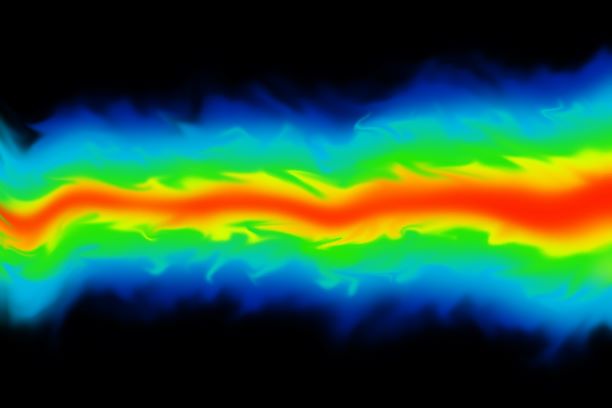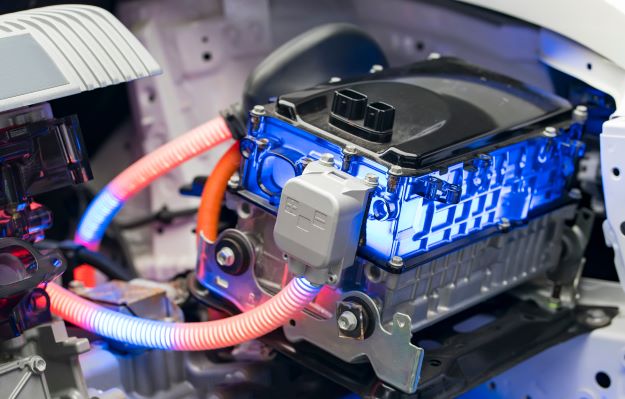Courses by Software
Courses by Semester
Courses by Domain
Tool-focused Courses
Machine learning
POPULAR COURSES
Success Stories
Week 9 - FVM Literature Review
Aim :- Introduction to Finite Volume Method. Objective :- Explain what is FVM. State major differences between FDM & FVM. Describe the need for interpolation schemes and flux limiters in FVM. Theory :- Finite Volume Method, The finite volume method (FVM) is a method for representing…
Suraj Gawali
updated on 19 Aug 2022
Aim :- Introduction to Finite Volume Method.
Objective :- Explain what is FVM. State major differences between FDM & FVM. Describe the need for interpolation schemes and flux limiters in FVM.
Theory :-
Finite Volume Method,
The finite volume method (FVM) is a method for representing and evaluating partial differential equation in the form of algebraic equations. In the finite volume method, volume integrals in a partial differential equation that contain a divergence term are converted to surface integrals, using the divergence theorem. These terms are then evaluated as fluxes at the surfaces of each finite volume. Because the flux entering a given volume is identical to that leaving the adjacent volume, these methods are conservative. Another advantage of the finite volume method is that it is easily formulated to allow for unstructured meshes. The method is used in many cfd packages. "Finite volume" refers to the small volume surrounding each node point on a mesh.
Finite volume methods can be compared and contrasted with the finite difference methods, which approximate derivatives using nodal values, or finite element methods, which create local approximations of a solution using local data, and construct a global approximation by stitching them together. In contrast a finite volume method evaluates exact expressions for the average value of the solution over some volume, and uses this data to construct approximations of the solution within cells.
In the computational fluid dynamics, if we see the solver methods are divided into three parts.
- Finite Difference Method
- Finite Element Method
- Finite Volume Method
Finite Volume Method used to solve a problem:
- Here we write the equations for a volume and not for a point.
- Apply mathematical techniques to solve the equations for all kind of grids.
- Finite Volume representation preserves the concept of conservation.
Steps in Finite Volume Discretization:
- Write the governing equation in the integral form.
- Apply gauss divergence theorem.
- Take suitable methods to calculate the flux terms.
EXAMPLE:
1D Heat conduction equation:

Governing equation or the conservative equation is given by;
Here, S- source term which is responsible for the heat generation.
alpha - function of temperature.
consider a small volume from the control volume, then the governing equation is given by;
Simplify the above equation and consider (w,e) in the control volume;

To find the dT/dx value at the above hilighted points(small w and e), we can use approximation methods (Taylor series).
On solving the above equation we get,
Here,
- source term ; A- face area; dV= volume.
For source term in CFD, the source term that is going to added in a cell if it is actually the function of the temperature then linearisation is done to the source term.
On linearising this source term we get;
The above equation consist of a constant term and states that source term is the function of temperature.
main equation says that [Heat flux out ] - [Heat flux inn] + Source term = 0.
Hence FVM is said to conserve quantity better as in the derivation we are considering the equations for controlled volume and finally getting results in the form that is conservative.
Interpolation Schemes in FVM:
- Upwind Interpolation Scheme
- Linear Interpolation Scheme
- Quadratic upwind Interpolation Scheme
- Hybrid,TVD and ENO Interpolation Scheme
Upwind Interpolation Scheme -
It is mainly used for the convection dominant problems. Velocity for a given point ,the direction of that particular velocity that determines the variables values used in interpolation process. In upwind scheme it make use of nodes that are in the upstream of the given node.
This scheme is almost similar to the forward difference approximation or a backward difference approximation based on the flow direction. We know that, when calculating gradience, we need to have those values bounded, so that they dont jump. Hence this approximation satisfies the boundness condition.
Linear Interpolation Scheme -
Linear interpolation is the method of generating new data points with a range of a discrete set of known data points.
The linear Interpolation scheme is same as the central difference formula that we considered for the first order derivative. So this scheme is also known as the central difference scheme.
Generally it is used to solve the integrated convection-diffusion equation. It leads to a easy approximation for the evaluation of gradients that are required for evaluation of diffusive fluxes.
CDS is a second order accurate and may produce oscillatory solutions i.e here if the grid spacing is very large we can find oscillatory solutions. It is bascially a first order, as we refine the grid then accuracy is close to the second order.
Quadratic upwind Interpolation Scheme -
In CFD it is called as QUICK i.e. Quadratic Upstream Interpolation for Convective Kinematics. QUICK considers the second order derivative term into consideration and ignores the third order derivative term.Hence it is considered as third order accurate.
Now approximate the value of the particular variable at the face centre of the control volume by the quadratic intropolation by using the values at three nearest computational nodes i.e 1 downstream node(D) and two upstream nodes(U, UU) respectively. The equation is given by;
This scheme generally used to solve the convective-diffusion equations using the second order central difference for the diffusion term and for the convection term the scheme is third order accurate in space and first order accurate in time.
Flux limitters in FVM:
- For a convective fluid flow it has been observed that for the low order schemes are stable but unstable during discontunity or shocks, where as higher order schemes unbalanced or unstable in nature because they show high oscillations and sharp changes in the solution .
- These are used in high resolution schemes.These help in limitting the solution gradient near shocks and discontinuities. Objective of implementing flux limiter schemes is to control the special derivatives to the realistic values.
- The limiter function is greater than or equal to zero ,i.e. when the limitter is equal to zero then the flux is represented by low resolution schemes.Similarly if the limitter is equal to 1 (smooth solution), it is represented by high resolution schemes.
- Flux limiters are also called as slope limiters as they have same mathematical form and they can help in limiting the solution gradient near shocks and discontinuities.
- The flux limitter is used when the limiter acts on the system fluxes and slope limiter is used when the limitter acts on the system(like pressure and velocity).
- This factor are selected as per the given problem and the scheme used for the solution.
Leave a comment
Thanks for choosing to leave a comment. Please keep in mind that all the comments are moderated as per our comment policy, and your email will not be published for privacy reasons. Please leave a personal & meaningful conversation.
Other comments...
Be the first to add a comment
Read more Projects by Suraj Gawali (25)
Project 2
Aim :- To find maximum heat generation in the battery pack mathematically and using MATLAB/Simulink. Objective :- The max heat generation of the battery The SOC of the battery at 2 *104second of the battery operation Theory :- SOC Calculation Technique In EV Battery Pack: The State of Charge (SoC) of a battery…
20 Sep 2022 01:46 PM IST
Project 1
Aim :- Design a battery pack for the car with 150Kw capacity. Objective :- Design the battery pack configuration. Draw the BMS topology for this battery pack. Theory :- Battery Management System, A Battery Management System AKA BMS…
19 Sep 2022 01:21 AM IST
Week 11 - Simulation of Flow through a pipe in OpenFoam
Aim :- Simulation of Flow through a pipe in OpenFoam. Objective :- Simulate an axi-symmetric flow by applying the wedge boundary condition. Validate results with the Hagen- Poiseuille's equations for the fully developed flow. Also write code in Matlab to automate the generation of blockMeshDict file. …
24 Aug 2022 06:45 AM IST
Week 9 - FVM Literature Review
Aim :- Introduction to Finite Volume Method. Objective :- Explain what is FVM. State major differences between FDM & FVM. Describe the need for interpolation schemes and flux limiters in FVM. Theory :- Finite Volume Method, The finite volume method (FVM) is a method for representing…
19 Aug 2022 07:34 AM IST
Related Courses


Skill-Lync offers industry relevant advanced engineering courses for engineering students by partnering with industry experts.
Our Company
4th Floor, BLOCK-B, Velachery - Tambaram Main Rd, Ram Nagar South, Madipakkam, Chennai, Tamil Nadu 600042.
Top Individual Courses
Top PG Programs
Skill-Lync Plus
Trending Blogs
© 2025 Skill-Lync Inc. All Rights Reserved.













